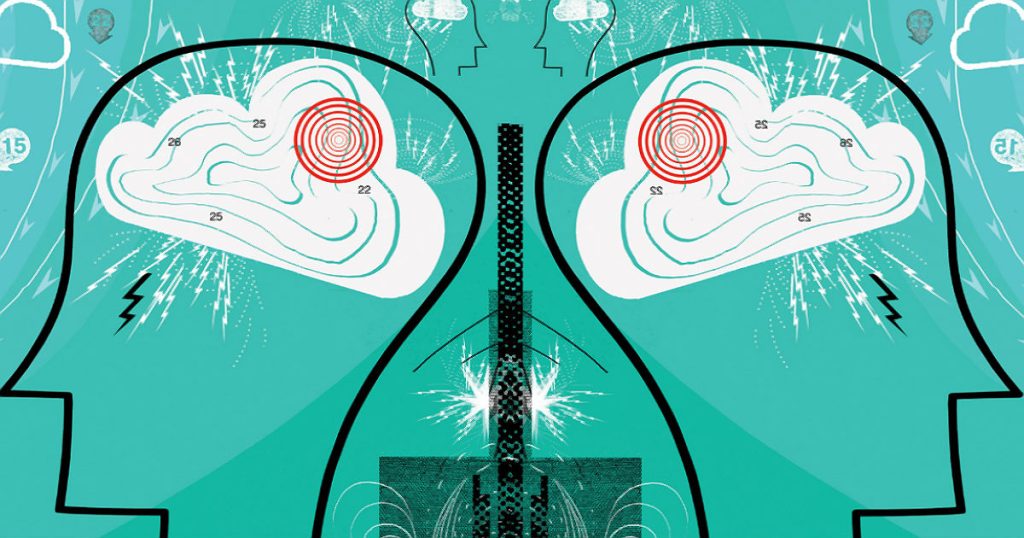I learned to meditate when I was 8 years old, though I did not know it at the time. I was beset by terrible headaches, and the doctors did not know their cause. In retrospect, I think it was the glue—I was an avid model builder—but whether that was the cause or not, the result was that I would find myself on my own in my room confronted by a pain that would not be diminished by aspirin or other drugs. What I learned was how to deal with it experientially.
I would lie in my bed in the pitch-dark and the silence (the slightest sound or hint of light was deadly), often with a pillow over my head. I remember the feeling of trying to flee and the near panic that would well up when I discovered there was nowhere to run and nowhere to hide. My only option was to turn and face the experience, looking more and more closely at its details. I noticed that as I got closer to it, the pain would take on a variable texture. Some parts of it were sharp, some parts were dull. I noticed too that when I looked closely enough, it would pulse with the rhythm of my heartbeat. At first I dreaded the pounding of the blood in my head, because every surge brought with it a surge of pain.
But then I noticed that because it was pulsing, the pain diminished on the back stroke, and that in between the high points there were moments of less intense discomfort. I slowly learned to inhabit those spaces, to give my greatest attention to the instances of lesser pain. By focusing on these, I found that the surges in between were less intrusive, and I was gradually learning to “skip over” them and settle down on the softer areas. As my focus became even more acute, I would experience a single moment, really only a brief instant, when there was no pain at all. At a certain point in the cycle, there was a tiny halt before it all came rushing back again.
That narrow point of relief was so compelling that I would try to relocate it, to return to it again and again, and to focus my attention ever more precisely upon the quiet, sweet spot where there was no pain. It was there, though it was often hard to find. After a while I would find myself able to rest there for longer and longer periods of time. It was almost as if with my mind I was prying open a place of refuge in the middle of the storm. Eventually that magic moment would come when even the pulsing part of the stroke was free of pain. This would happen once at first, then again a little later, and then there would be two or even three beats of the heart with no pain. And there would eventually come a time, usually about 20 minutes after I started, when I would lie there in absolute bliss, feeling the blessing of no more pain. The headache was entirely gone.
Years later in college, in a life-altering encounter with the teachings of Chuang Tzu, I came across a good explanation of all this in the story of Cook Ting. Cook Ting was cutting up an ox for Lord Wen-hui, who was impressed with the cook’s high level of skill and asked what his secret was. Cook Ting explains that a good cook changes his knife once a year—because he cuts. A mediocre cook changes his knife once a month—because he hacks. Holding up his own knife, he says he has had it for 19 years without sharpening it. Then he says (in Burton Watson’s translation), “There are spaces between the joints, and the blade of the knife has really no thickness. If you insert what has no thickness into such spaces, then there’s plenty of room.”
Soon after, when I discovered Buddhist meditation, it felt very familiar, and I remembered Chuang Tzu’s words and how they seemed so aptly to describe my experience as a boy. I think consciousness has no thickness and can therefore be inserted between mind objects to find spaces with plenty of room.
Much of the time our mind is thick, with thoughts and emotions and cognitive content, but when focused on the breath or on some other object it narrows, gets sharper and more precise, and is increasingly capable of becoming aware of just that thin sliver of experience presenting itself in the present moment. As attention cuts into that moment, again and again with each pulse of the heart, awareness slips effortlessly between the artifacts of our mind to find the empty space of simply knowing. I would not wish upon anyone my own path of discovering this, but I would heartily recommend the peace that is to be found there.
Thank you for subscribing to Tricycle! As a nonprofit, we depend on readers like you to keep Buddhist teachings and practices widely available.
